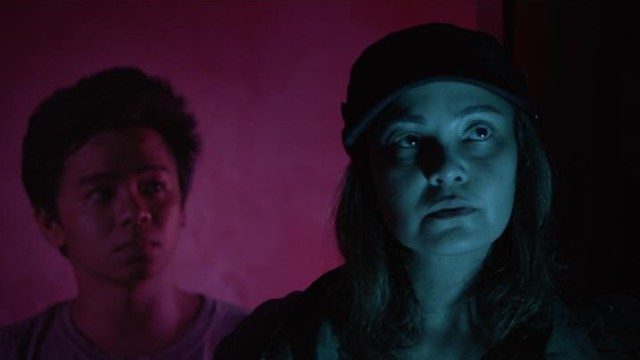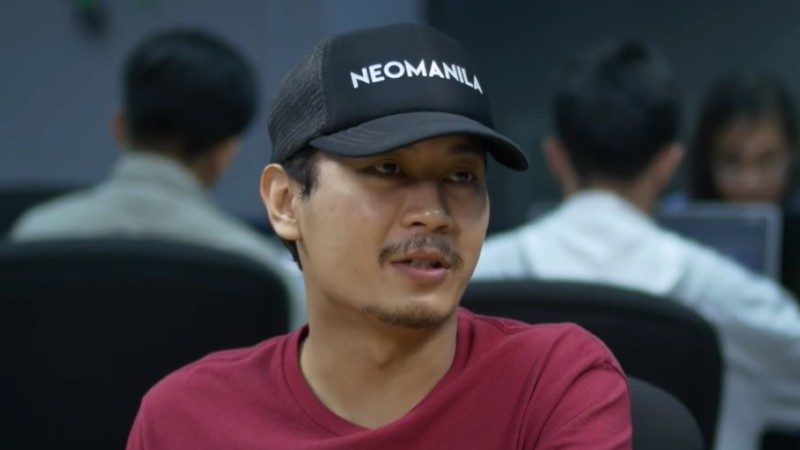SUMMARY
This is AI generated summarization, which may have errors. For context, always refer to the full article.

The idea behind Mikhail Red’s Neomanila was straightforward – it was the beginning of the Duterte administration’s bloody but popular “war on drugs,” and the body count was swiftly and steadily rising.
The director, then 24, chanced upon a BBC story on a young woman who allegedly carried out “contract killings as part of the government-sanctioned war on drugs.” Red was hooked.
“She was a very fascinating character. I wanted to make a film about the drug war from the perspective of the middlemen – the literal people caught in the middle. I wanted to show that we’re all victims in this, nobody wins in a war,” Red said in a Rappler Talk interview days before Neomanila was released theatrically on March 13.
Neomanila, Red’s 3rd feature film, tells the story of Irma (Eula Valdez), a middle-aged woman who runs a pest extermination shop at day and is a gun-for-hire at night. She meets Toto (Timothy Castillo), a young drug runner who initially needs bail money for his junkie of an older brother.
Set in the slums of Manila, it’s a noir movie that tells the story of the “drug war” from the lense of a gunman.
It is, as Rappler critic Oggs Cruz puts it, a “fascinating slow burn.”
And just like the plot itself, Neomanila took its time. While it first premiered during the 2017 QCinema Film Festival, it spent over two years touring the world. After it was screened at least 10 times in the Philippines, it was shown to foreign viewers via festivals and even commercial releases abroad.
It’s finally home.

“Neomanila, at that time, it was a very urgent subject,” recalled Red of the preps for the movie. It’s at this point where I must add – while it’s every bit a work of noir, Neomanila feels very real and very grounded. As a journalist who once parachuted into the disturbing and perplexing world that was the “drug war” night shift, it felt strangely familiar. But that’s no wonder.
Red and his team, after all, made it a point to “night crawl” and join the media and police who covered and responded to the deaths in the drug war – both those caused by alleged vigilante killings and those from police operations.
“It was disturbing and unsettling. Every night, there were at least 2-3 crime scenes and we would tail the media and the police. It was really for me and the writers to immerse ourselves in the milieu. We wanted to make it as authentic as possible,” added Red.
And it’s probably this experience that fuels the movie’s very clear message about the “drug war” that was waged – and is still being waged – under the Duterte administration. In all its subtlety, is clear about what it wants to say. It’s a line that Raul (Rocky Salumbides), Irma’s partner, utters at least twice in the film: suspect or victim, they’re all the same.
Making a statement about very real situation in a highly politicized country is precisely what Red does not cower away from.
“You have to be fearless. As a filmmaker, that’s the end goal. You need to have something to say. Even though on the surface, there’s that layer to entertain. With Neomanila, it’s the type of film – if you really want to effect change or swing a vote, you don’t want to preach to the choir. You wanna reach the people on the fence, the wide audience,” he added.
To watch Neomanila also requires being hyperaware of the world it was made in and the world that we reside in now. Cruz writes in his review of the film back in 2017: “Sadly, the film ends in an unnecessary montage of footage of killings that betrays all of its enduring subtlety. The point’s already all over the film, and bludgeoning it with the parting montage only cheapens it.”
Two years later, it’s an ending that becomes not a betrayal of subtlety but a reminder of what’s happened, what’s happened since, and what’s happening still. The montage, of news reports from the early years of the anti-illegal drugs campaign, is a reminder of how much things have changed but remained the same in the roller coaster that is the “drug war.”

Since Duterte’s campaign against illegal drugs began (it was among his key 2016 election promises), they’ve managed to tweak its deadline from 3-6 months, to a couple of years, to… forever, if they had it their way.
It’s been called off, called back on, ordered scaled down, ordered amped up. The killings in Metro Manila have gone down, only for them to rise in nearby Central Luzon. (READ: New killing fields in Duterte’s drug war)
Two years later, it can be embarrassingly easy to forget how dark and disturbing the milieu was. It’s jarring to be reminded of a time when dead bodies with signs that read “Pusher ako (I am a drug pusher)” had become the “norm” in the more impoverished parts of the metro.
And that’s what makes Neomanila important. It’s a rude reminder of what Manila has turned into and what we let it become. – Rappler.com
Add a comment
How does this make you feel?
There are no comments yet. Add your comment to start the conversation.